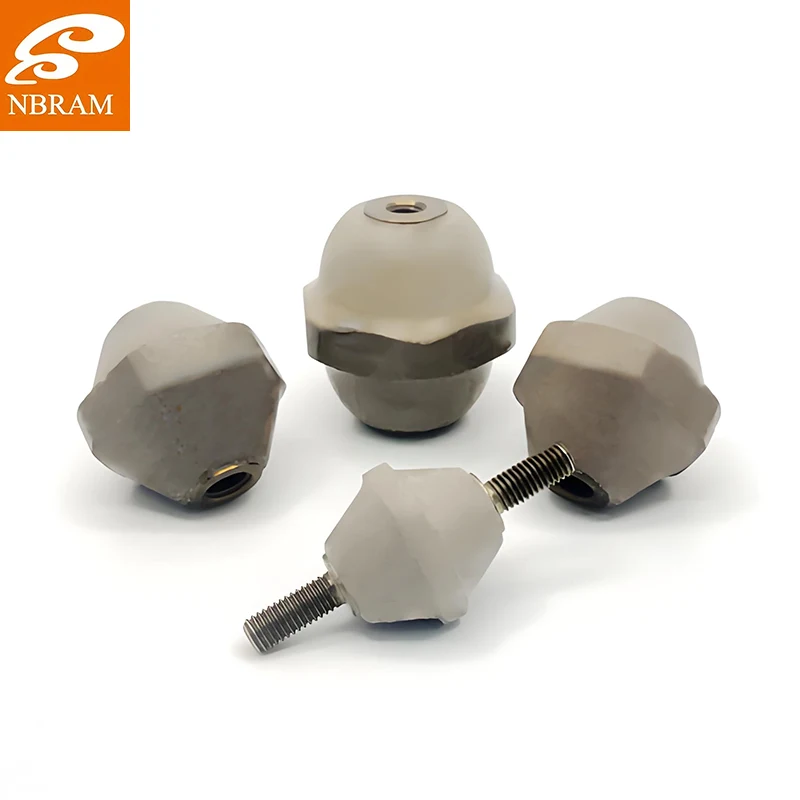Back in 2020, I was consulting for an aerospace components manufacturer that was struggling with thermal management in their avionics enclosures. Their aluminum heat sinks were causing electromagnetic interference, while polymer composites couldn't handle the thermal cycling. We switched them to NBRAM's Mica-Ceramic Composite Part and the results were transformative - suddenly they had a material that provided perfect electrical insulation, excellent heat dissipation, and could withstand the brutal thermal shocks of aviation environments. The engineering team told me they reduced component failures by 87% in the first year. If you're battling with thermal management issues where electrical isolation is critical, it's time to source it that actually delivers on all fronts.
You know, after twenty years dealing with thermal management nightmares across every industry from aerospace to consumer electronics, I've learned that most composite materials promise the world but deliver compromise. Either they insulate well but can't handle heat, or they manage heat but create electrical issues. NBRAM's Mica-Ceramic Composite Part is different - it's one of those rare materials that actually gives you the best of both worlds without the usual trade-offs. The natural mica provides the electrical isolation while the ceramic matrix handles the thermal management, creating a synergy that outperforms anything else on the market. It's the kind of component that makes engineers sleep better at night knowing their designs won't fail due to material limitations.
Here's what makes these composite parts stand up to extreme conditions: operating temperature range from -60°C to 950°C continuous, with thermal shock resistance that allows rapid cycling between extremes without cracking or delamination. Dielectric strength maintains 15-25 kV/mm depending on thickness, with volume resistivity consistently above 10^14 Ω•cm even after prolonged exposure to high temperatures. The Mica-Ceramic Composite Part achieves thermal conductivity of 1.5-2.5 W/m•K - enough to manage heat effectively while maintaining excellent electrical insulation. Available in thicknesses from 0.5mm to 25mm, with custom formulations to optimize either thermal performance or dielectric strength for specific applications.
During my last factory tour at NBRAM, what really impressed me was their proprietary co-firing process for Mica-Ceramic Composite Part manufacturing. They don't just mix mica and ceramic powders - they've developed a layered approach where mica platelets are oriented parallel to the surface, creating what's essentially a natural barrier against electrical tracking. Each batch undergoes CT scanning to check for micro-voids or delamination that could compromise performance. Their ceramic formulation includes specific additives that match the thermal expansion coefficient of the mica, preventing the stress cracks that plague most composite materials. I watched them reject an entire production run because the mica alignment was off by just 2 degrees - that's the kind of quality control that makes these parts last decades in service.
We had this nightmare project with an electric vehicle manufacturer last year - their battery management systems were failing due to thermal runaway between cells. The existing insulation materials either couldn't handle the heat or created electrical leakage paths. Installing NBRAM's Mica-Ceramic Composite Part as inter-cell insulation was like flipping a switch - suddenly they had perfect thermal management and electrical isolation in one material. The automotive engineers told me they increased battery pack density by 15% because they could place cells closer together without risk of thermal propagation. These composites have become essential for power electronics, high-voltage busbars, semiconductor manufacturing equipment, and any application where you need both thermal management and electrical isolation in a single, reliable component.
